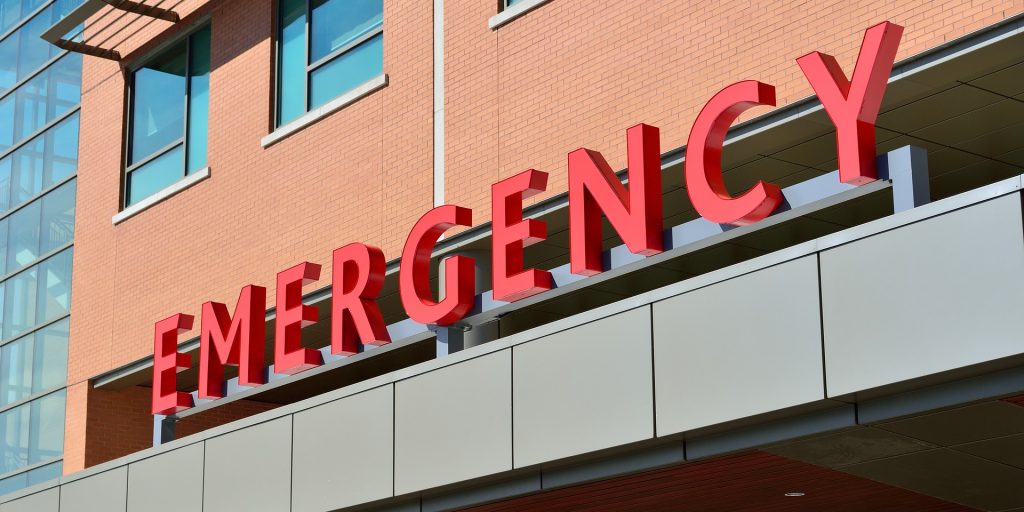Using data to improve emergency response resources
The ability for a COVID-19 outbreak to swiftly consume emergency response resources has emphasized the need for accurate and timely data reporting as a central component of the pandemic response effort. Continuous analysis of data collected is producing concerning results for response leaders, as new variants of the virus are discovered, and the United States continually breaks (or meets) its daily record of new cases and deaths.
As cases spiked towards the end of 2020, health-care workers across the country continued to work tirelessly to meet the challenge. But the numerous hotspots occurring almost simultaneously made it increasingly difficult for facilities in hard-hit areas to receive much-needed staffing and supplies from nearby regions. This has negatively impacted the response of care facilities to treat and care for those infected and strained additional emergency response resources as cities and states also responded to intense wildfires, an active hurricane season and civil unrest.
To ensure resources are being deployed efficiently, COVID-19 data reporting and response tracking efforts have been deployed to give emergency management teams and care facilities accurate, real-time information. With this insight, public health authorities, emergency response organizations, insurers and health-care facilities can make better informed decisions and stay ahead of the virus by securing needed resources.
But collecting data can be a challenge as frontline health-care workers, who are tasked with care and now the vaccination of the community, already have a vast amount of information they are required to provide and track daily. Additionally, expanding reporting requirements can be tough for smaller health-care systems and those in rural communities as they typically have fewer resources than urban care systems.
To improve data collection efforts, health-care organizations are leveraging the use of emergency management technology platforms to help with gathering and reporting COVID-19 data. These systems are designed to help organizations complete crucial tasks, including:
- Managing emergencies and mass casualty incidents
- Tracking patients and medical surges
- Providing pre-hospital notifications from emergency medical services teams en route
- Mitigating accreditation risks
- Streamlining reporting to enable documentation for reimbursements
The use of advanced emergency management technology, which meets the needs of the current pandemic, will allow for health care and emergency management teams to have unprecedented levels of situational awareness to better manage public health crises.
To meet the demands of the current health crisis and those in the future, emergency preparedness and response teams need technology that delivers improved data collection and quality and enables users to:
Create and improve, and scale workflow processes
The foundation of any emergency response plan is defined workflows and repeatable processes to guide actions and response activities. Since the start of the pandemic, hospitals have modified operational and clinical protocols to continually ensure patient and staff safety as the situation evolves.
Care facilities that include routine events, incident responses and other workflows into a cloud-based management system can automatically remind employees to perform tasks and confirm completion of each step using an app on their mobile device. Organizations can enhance compliance by improving accessibility (and convenience) with the use of mobile devices to help collect timely data. This provides administrators with a real-time perspective on the status of prevention and incident-response measures.
Although many hospitals have made advancements in data collection efforts in recent years, the pandemic has created a new need for this real-time situational awareness. It wouldn’t be surprising if the use of this data becomes an industry standard practice after the pandemic as standardized reporting and automated data collection leads to facilities achieving greater operational efficiency.
Enhanced collaboration and coordination efforts
Standardization improves hospitals’ ability to coordinate and collaborate with other agencies such as public health departments, emergency management agencies, and first responders. Emergency management systems seek to provide an orderly framework that helps responders coordinate their actions across geographies and communication channels, bridging the technology and jargon gap which could separate hospitals, agencies, private companies and volunteer organizations. As these disparate groups respond to outbreaks and embrace the use of shared, standardized forms, terminology and established communication channels, cross-functional effectiveness will improve, leading to better outcomes.
Each step in the process generates data that is collected automatically by emergency management technology or gathered from linked systems at hospitals and other sources of key metrics. The standardization used in emergency response efforts makes the data more suitable for apples-to-apples comparisons that produce high-quality results.
Improve understanding of events
Even with automatic submission of high-quality data, the volume of information involved in tracking public health and safety trends demands tools that are up to the task of organizing and processing that data. The latest emergency management solutions provide rapid analysis and intuitive dashboard interfaces that help users quickly isolate trends, understand variables or visualize conditions, whether historical or in real-time.
As the current pandemic continues to evolve, pursuing comprehensive situational awareness will continue to improve the response efforts of care facilities and emergency responders. With the use of advanced emergency management platforms, the ability for an organization to connect its data sources will enhance communications and information management for better preparedness and response.
Sam Klietz is the chief client and sales officer at Juvare. Klietz joined Juvare in 2007 to support the advancement of emergency management, organizational integrity, business continuity, resiliency and risk management solutions. He has spent the past 13 years focusing his efforts on the leveraging of preparedness, response and recovery SaaS technologies to address the needs of tomorrow’s resilient communities and organizations today. He is currently responsible for spanning the public and private sectors for Juvare, including national, regional and local government, defense, health care, oil and gas, higher education, transportation and other commercial industries.





















Wow